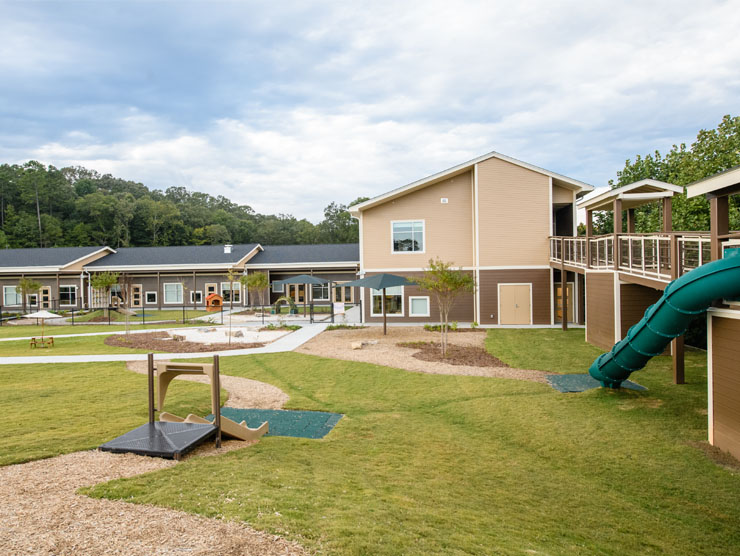The importance of offering child care for its constituents has been recognized at Stanford University since the late 1960s. Its status as one of the largest sponsors of child care services in higher education today speaks to its commitment to working families and to its willingness to address changing workplace realities.
Now, with six centers and a capacity for more than 900 children, child care is firmly embedded in the Stanford community.
“Child care is critically important to attracting and retaining Stanford University faculty and staff. It’s also important to our graduate students and postdocs, who often come here from other parts of the world without their families close by. Most are coming in the prime of their family growth years and at a really demanding time in their careers,” says Phyllis Stewart Pires, Stanford University Associate Vice President, Employee Support Programs & Services.
The university’s child care program has helped it face modern human resource challenges: greater competition for talent especially among qualified Millennials and GenZs, increasing costs of living in the Bay Area, and a desire to retain top talent, such as young faculty on the tenure track.
Although the Bay Area doesn’t qualify as a child care desert, the supply has diminished, according to Stewart Pires, with infant care being the biggest challenge. That aligns with findings in which reports that 49% of parents with children under five say they don’t have the child care they need, and 55% of parents of children under six admitting to missing work due to child care responsibilities. This crisis could worsen with The Century Foundation projecting 70+K child care programs nationwide, 13,581 in California, could close as the impact of a steep decline in federal child care funding is felt.
A “Trilemma” of Child Care Challenges
Bright Horizons research identifies a “trilemma” of challenges to meeting today’s child care needs: Availability, Quality, and Affordability. Stanford is committed to addressing all of them and adds that long term planning for the sustainability of programs is essential.
The university has significantly expanded its child care programs as demand has grown. It has done so while keeping quality standards high. "Stanford’s mission is to contribute to the world by educating students for lives of leadership and purposeful contribution; advancing fundamental knowledge and cultivating creativity; and accelerating solutions and amplifying their impact,” says Stewart Pires. “This includes the youngest members of our community. “
Keenly attuned to affordability, Stanford has taken unique steps to address costs. "We try to keep our tuition rates slightly below market in our area, which has become more difficult as the cost of labor in our centers has grown,” says Stewart Pires. “We couple that with having a total compensation package for teachers that is above market, so that we can ensure greater retention and stability for children and families.” Stanford also offers portable grants based on need as well as a tuition reduction program for graduate students and postdocs who use university centers.
A Sustainable Model for Child Care Success
Stewart Pires believes that the “trilemma” challenge is not going away, but says, “We think of child care as a long-term play. Child care systems cannot come and go. Once you put child care in, it becomes an important part of the community infrastructure. So, it needs to be sustainable. At Stanford, we're trying to put a whole package together so that we can maintain long-term sustainability while facing some unprecedented challenges.” Stanford does subsidize its centers’ operating costs, enabling the operators to direct their income to attracting and retaining teachers.
Overall, Stewart Pires believes that solving the child care crisis requires a comprehensive, collaborative approach among public and private employers, federal and state governments, and the vast array of child care providers. Having a champion at the leadership level is also important. “We've been really fortunate. The two provosts that I've had the pleasure of working under have both been very supportive,” says Stewart Pires. “But don't rely on one champion. Ensure that you've got the understanding of the value of child care from various critical players: those who are making financial and resource decisions, your high-potential employees, those responsible for your external image, those who worry about your risk. Bring all those people into the conversation and really make sure they understand the opportunity that this represents.”
“Investing in child care pays off. It has helped us to attract and retain talent,” say Stewart Pires. “It's certainly multifaceted, long-term work, but providing quality child care clearly helps parents with young children address some of the challenges they face in moving to our community.”




